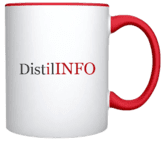
Table of Contents
What Is Data Interoperability?
Interoperability in the healthcare industry means timely solutions to health problems through electronic devices that are secure and easy to access with easy integration. It can be easily useful for any individual or multiple people as a population.
A single doctor or organization cannot treat patients experiencing heart conditions; a patient needs to go from one organization to another. For example, the patient will first see a cardiologist to run an emergency and get the tests done for further treatments. For additional tests, a patient needs to see the primary lab check for taking a few tests or running any special kind of reports suggested by a cardiologist.
The information is then passed to a cardiologist and dragged into the emergency staff room, where doctors can refer to the patient’s medical history to provide the healthcare treatments.
There is seamless information surpassed of a single patient for getting a single treatment.
There are multiple benefits of data interoperability system integration in the healthcare system, and they are;
- Seamless healthcare information and management
- Easy revenue cycle management
- Seamless coordination between healthcare providers and payers
- Efficient and on-point performance in providing treatments
- Managed healthcare treatments of individual patient
- IT compliance in the healthcare industry for smart and digital treatments
This blog further states everything about interoperability and its importance in healthcare organizations.
Why Interoperability is important?
Health data is one of the challenges to exchange and surpass as it is always supposed to be confidential and in the most secure ways. The data in the healthcare industry consists of confidential information about patients’ health, which is not supposed to be passed to anyone.
- It is supposed to be kept private.
- Proper interoperability is required there, as it should not be accessed by anyone but authority.
- Understanding the population’s health needs can positively affect them.
Overall, population health data can only be fetched with interoperability. According to studies in the United States core data for interoperability, 4 out of 5 adult citizens have chronic health disorders or other physical health conditions. It is estimated that 66% of the US healthcare cost is accounted for.
It helps provide a complete view of the patient’s health and thoroughly studies the health reports to incorporate proper treatment. Government health sector officials can easily access health interoperability to provide and fulfill the requirements of their citizens according to the ratio of health reports.
Health interoperability is not just equipment; it helps citizens incorporate the proper checkup of patients and ensures the positive health report of the population.
Health Information Exchanges and Interoperability
Gone are the days when healthcare payers awaited long, delayed answers and results about their health. Today’s consumers require modern solutions, which are, in a way, speedy solutions, but they are always expected to keep their health information confidential. This is one of the reasons healthcare organizations have started to adapt to a smart network that can accommodate interoperability systems and share information most securely.
Modernization is coming over in the healthcare industry. Now, as organizations have shown the success rate post usage of the interoperability system, a few challenges still need to be overcome and known before availing the system. These challenges are:
No standardization of the system: Most of them accept the standard formats right now, but many healthcare providers still need help resetting the standard format. There are a few difficulties that are faced due to this, and they are;
- Few providers have to use the highly customized EHR systems made specifically for their needs.
- Converting this customized EHR system to a standard format now becomes difficult, limiting the system’s use case.
Lacking high-level security: One of the best use cases of interoperability is keeping health information secure and private. Now, healthcare organizations need help balancing whether to surpass the healthcare confidential information ahead of time, as they are mostly afraid of cyber attacks. The ratio could be more stable but increasing.
Consensual activity: Healthcare organizations need to be clearer about surpassing the information regarding the patient’s health history or records, but sometimes, it becomes mandatory for organizations to pass it further for the treatment. There is always a doubt about getting consent from patients.
Overall, many advanced levels are coming up that help secure the patient’s data, which the health organization can use along with following standard formats like FHIR. Cloud and hybrid computing are some factors helping the healthcare industry incorporate it smartly in the best ways possible.
A few challenges should be known in detail to stay aware of unwanted activity.
Challenges of interoperability in healthcare
As part of the modern and smart world, most healthcare systems have adapted the use of interoperability systems to get accurate results, considering the patient’s healthcare report. Organizations still face a few challenges, so you can overcome them before they appear.
Let’s understand the challenges of interoperability in healthcare.
1. Miscommunication and Coordination
Leaders, healthcare organizations, and regulators should coordinate smoothly. A small miscommunication can lead to major health issues in a patient’s life. Regulators tend to provide information at their own pace, whereas organizations expect the proactive use of the system, so there becomes a small communication gap between regulators and organizations. So, it is scheduled that organizations will pre-plan their activities to avoid miscommunication between multiple people when using interoperability.
2. Budget limitation
Every health organization is different in its ability to afford financial or technical systems to adapt to better patient treatment. Surely, for some systems to adapt, they need government grants to keep up with the updates, but there are cloud vendors of the system that are ready to provide the payment as per the use, which can be affordable for most organizations.
3. Multiple technological needs
Each organization has different technological needs, so regulation depends on the treatment it provides patients. The organization helps to connect internal and external patient health data, which allows customization according to the organization’s needs. A hybrid cloud platform provides multiple options for integrating third-party or external data.
4. Legacy system
Healthcare organizations with traditional legacies find it difficult to adapt to modern technologies and systems, so they have to set up the whole system over again. For such organizations, hybrid cloud systems make extracting and maintaining data easier and can surpass the system as a legacy.
What are the levels of interoperability in the healthcare industry?
There are different levels of interoperability, and the experts in the Healthcare Management System differentiate four different levels. Healthcare organizations are adapting their IT incorporation and systems to smartly use interoperability systems that revolve around patient-centered technology and provide results.
Let’s understand four levels of interoperability in the healthcare industry.
1. Foundational level of interoperability
The foundational level is the first step and is considered the basic level of interoperability. In this, data is securely transferred from one system to another. It is important to ensure it is surpassed in the particular format.
For example, a nurse downloads the PDF data of patient healthcare reports from the authoritative lab report, which can be noted manually on the computer device to maintain the record.
2. Structural level of interoperability
The data is kept in the standard or structural format after fetching it from the first source. The standard format is maintained in the same format in other devices of the same organization. This helps keep up with uniformity, and it is organized. The data is followed with standard formats like FHIR and HL7 to make it centralized and easy to move from one device to another.
3. Semantic level of interoperability
The semantic level of interoperability is the data exchange between the different systems with different formats. There are multiple formats, such as DICOM and non-DICOM formats. Some formats include images that are transferred from one source to another without knowing the source of the image. Transferring the data is difficult, but it is done by artificial intelligence experts who help adapt the full semantic interoperability.
4. Organizational level of interoperability
It is data involving multiple organizations and seamless data exchange. The exchange of data depends on the requirements and goals of the organization. For this level to be achieved, the permit of government authority is needed to ensure consent between multiple groups.
Conclusion
Data Interoperability in healthcare is an important system to integrate and adapt that helps deliver timely and secure patient information from one organization to another or surpass the information within the organization. Interoperability also helps build healthy relationships amongst healthcare providers and payers because, according to reports, 25 top-notch successful collaborations have been noted.
It is one of the best solutions to rely on a healthcare organization that incorporates trust regarding keeping the patient’s data secure and consensually passing it to different organizations for precise treatment. There is absolutely no loss in adapting interoperability as it provides;
- Accurate and top-notch health outcomes
- Cost-effective for both healthcare providers and payers
- Faster results for quick treatments
- Helps in maintaining the privacy of patient’s data
- Manageable and easily accessible
- Secure and highly authoritative
It is time to act now and think about adapting the best interoperability healthcare system in the organization.
For more updates on payer news, health trends, medical advancements, and health news, payer latest update subscribe to DistilInfo HealthPlan and stay ahead in the ever-changing healthcare industry. Follow us for regular updates and valuable industry insights.
FAQs
- What is interoperability in healthcare?
Interoperability in healthcare refers to the secure, timely, and seamless electronic health data exchange to optimize health outcomes for individuals and populations.
- Why is interoperability important in healthcare?
Interoperability is crucial for providing a complete view of a patient’s health, ensuring coordinated care, improving patient safety, and reducing healthcare costs. It allows healthcare providers and payers to access and share essential health information securely and efficiently.
- What are the main challenges of implementing interoperability in healthcare?
Challenges include:
- Miscommunication and coordination issues.
- Budget limitations.
- Varying technological needs.
- Difficulties with legacy systems adapting to modern technologies.


